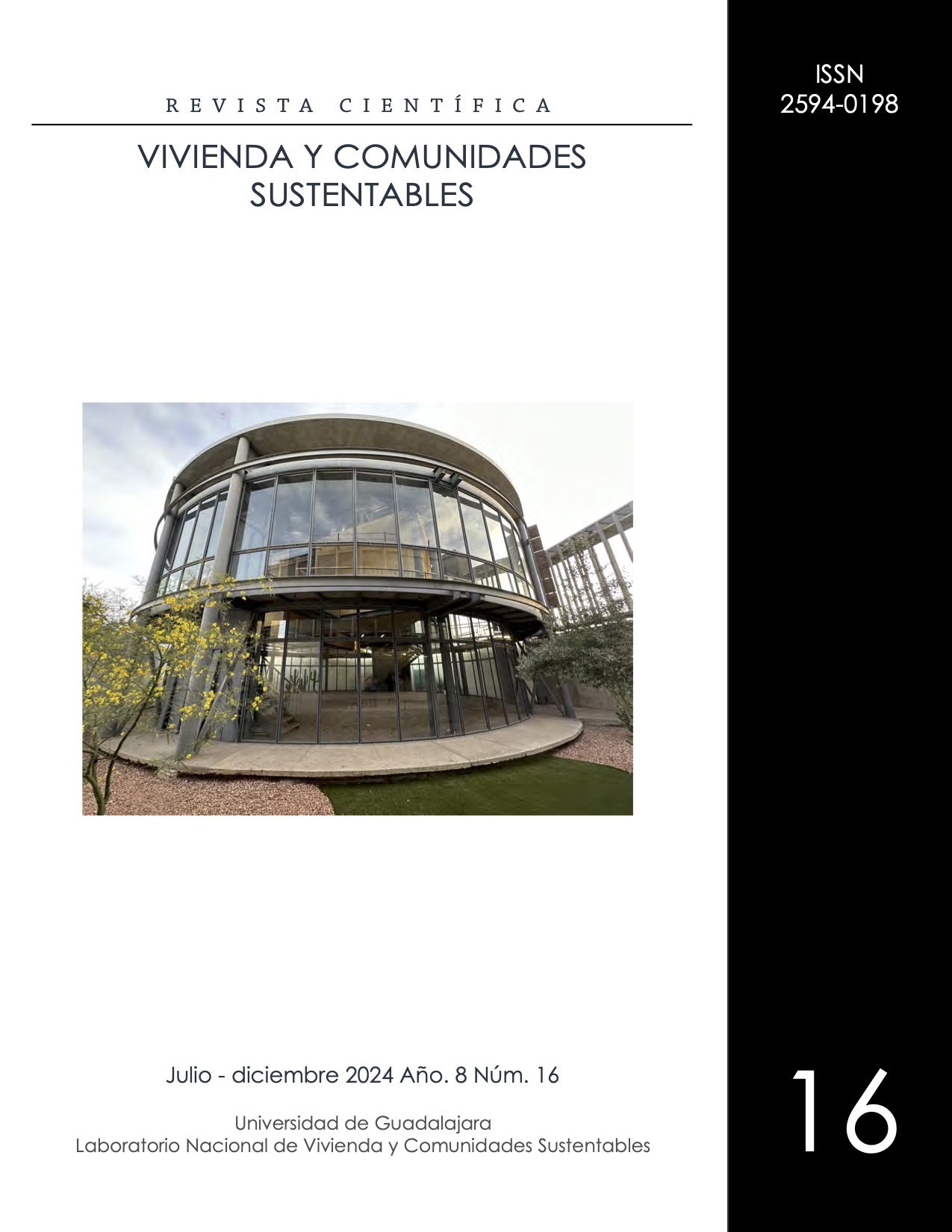Sustainable Optimization of Thermal and Mechanical Properties in Concrete Using Natural Additives: A Molecular Approach
DOI:
https://doi.org/10.32870/rvcs.v0i16.283Keywords:
Concrete Sustainability, Thermal Properties, Natural AdditivesAbstract
This paper delves into the Molecular Interaction in Concrete and its Impact on Mechanical Properties, specifically focusing on Strength and Heat Transfer. Emphasis is placed on the pivotal role of molecular interactions in shaping the macroscopic characteristics of concrete, particularly its compressive, tensile, and flexural strength. Concrete, comprising cement, water, aggregates, and additives, sees its structural behavior intricately influenced by these molecular interactions. It was prepared a 200kg/cm2 samples with and without and additive (obtained from Opuntia ficus – indica). The findings highlight a noticeable increase in ultrasonic pulse velocity with the incorporation of additives. Additionally, there are discernible modifications in thermal capacity, underscoring the tangible impact of molecular interactions. Micrographic representations vividly portray the reduction in spaces between the components within the studied medium, establishing a correlation with alterations in ultrasonic pulse velocity and thermal properties associated with such compaction. This study provides knowledge of the properties that are improved and that impact the sustainability of the material, through the use of natural materials.Metrics
References
Al-Rased, A. A., & Jabari, M. S. (2020). Influence of nano-silica particles on mechanical properties and microstructure of high strength concrete. Construction and Building Materials, 235, 117490.
Akkaya, Y., & Cagatay, I. H. (2021). The effects of different supplementary cementitious materials on the compressive strength and microstructure of self-compacting concrete. Construction and Building Materials, 304, 124527.
Hewlet, P. C., & Liska, M. (2019). Lea's Chemistry of Cement and Concrete. Elsevier.
Aitcin, P. C. (2003). The durability characteristics of high performance concrete: a review. Cement and Concrete Composites, 25(4-5), 409-420. https://doi.org/10.1016/S0958-9465(02)00081-1
Akgül, M., Do?an, O., & Odacio?lu, O. G. (2022). A Review on Adherence in Reinforced Concrete. Civil Engineering Beyond Limits, 4, 1765.
Akkaya, A., & Ça?atay, ?. H. (2021). Investigation of the density, porosity, and permeability properties of pervious concrete with different methods. Construction and Building Materials, 294, 123539. https://doi.org/10.1016/j.conbuildmat.2021.123539
Al-Rashed, R., & Jabari, M. (2020). Dual-crystallization waterproofing technology for topical treatment of concrete. Case Studies in Construction Materials, 13, e00408.
Barbhuiya, S., & Das, B. B. (2023). Molecular dynamics simulation in concrete research: a systematic review of techniques, models and future directions. Journal of Building Engineering. https://doi.org/10.1016/j.jobe.2022.107267
Gencel, O., Karadag, O., Oren, O. H., & Bilir, T. (2021). Steel slag and its applications in cement and concrete technology: A review. Construction and Building Materials, 283, 122783. https://doi.org/10.1016/j.conbuildmat.2021.122783
Hewlett, P., & Liska, M. (Eds.). (2019). Lea's Chemistry of Cement and Concrete. Butterworth-Heinemann.
Kagermanov, A., & Markovic, I. (2023). An overview on finite element-modelling techniques for structural capacity assessment of corroded reinforced concrete structures. Structure and Infrastructure Engineering, 19(11), 1585-1599. https://doi.org/10.1080/15732479.2022.2045612
Malik, M., Bhattacharyya, S. K., & Barai, S. V. (2021). Thermal and mechanical properties of concrete and its constituents at elevated temperatures: A review. Construction and Building Materials, 270, 121398. https://doi.org/10.1016/j.conbuildmat.2020.121398
ONNCCE (2004). Organismo Nacional de Normalización y Certificación de la Construcción y Edificación. NMX-C-275-ONNCCE-2004. Industria De La Construcción-Concreto Hidráulico-Determinación de la Velocidad de Pulso Ultrasónico a Través del Concreto-Método de Ensayo. Declaratoria de Vigencia disponible en: https://www.dof.gob.mx/nota_detalle.php?codigo=5640288&fecha=06/01/2022#gsc.tab=0
Sivakrishna, A., Adesina, A., Awoyera, P. O., & Kumar, K. R. (2020). Green concrete: A review of recent developments. Materials Today: Proceedings, 27, 54-58. https://doi.org/10.1016/j.matpr.2019.08.202
Suarez-Domínguez, E. J., Aranda-Jiménez, Y. G., Zuñiga-Leal, C., & De Leon-Ramirez, A. (2017). Technology effect of the addition of cactus mucilage and fibers to samples of poured earth. International Journal of Engineering Sciences & Research Technology, 6(35), 131-137.
Suarez-Dominguez, E. J., Perez-Rivao, A., Sanchez-Medrano, M. T., Perez-Sanchez, J. F., & Izquierdo-Kulich, E. (2020). Mesoscopic model for the surface fractal dimension estimation of solid-solid and gas-solid dispersed systems. Surfaces and Interfaces, 18, 100407
Published
How to Cite
Issue
Section
License
Copyright (c) 2024 Vivienda y Comunidades Sustentables

This work is licensed under a Creative Commons Attribution-NonCommercial-NoDerivatives 4.0 International License.
The authors who publish in this journal accept the following conditions:
In accordance with the copyright legislation, Sustainable Housing and Communities recognizes and respects the moral right of the authors, as well as the ownership of the patrimonial right, which will be transferred to the University of Guadalajara for its dissemination in open access. Sustainable Housing and Communities does not charge authors for submitting and processing articles for publication. Authors may make other independent and additional contractual agreements for the non-exclusive distribution of the version of the article published in Sustainable Housing and Communities (for example, include it in an institutional repository or publish it in a book) as long as they clearly indicate that the work is published for the first time in Sustainable Housing and Communities.






